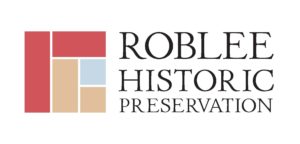Central New York’s historic places of worship in urban neighborhoods face acute threats not only due to high costs of building repair and maintenance, but also because they are more apt for consolidation with other nearby congregations and may be in neighborhoods facing high levels of poverty and population decline. Once closed, there are often substantial challenges in finding new, economically viable uses that can sustain architecturally intricate buildings with large auditoriums. PACNY has selected three churches in Cortland, Auburn, and Syracuse—all vacant or underutilized for years—to illustrate these threats, but also potential opportunities as places where communities can come together through commerce, arts, and other uses.
First Congregational Church, Cortland
Update, Fall 2020
The owner of the church installed a new roof this past summer. No updates have been made public on the Route 13 redesign and proposed demolition.

The former Cortland Congregational Church, looking across Route 13, 2018. (Bruce Harvey)
Threats: Structural Issues, Highway Expansion, Lack of Viable Long-Term Use
Located on NY Route 13 at the edge of downtown Cortland, the former First Congregational is a picturesque Romanesque Revival -style church with an attached parsonage designed by Syracuse architect A. L. Merrick and built in 1882-1883. While the current private owner has kept the church in good repair, a major structural issue may be beyond his means, and its present use as storage is not the best long-term use for the building. Another threat is a proposed redesign of Route 13 that calls for demolition of the building to create a round-a-bout intersection. Challenges for adaptive reuse include the church’s small land-locked triangular parcel, lack of parking, and repair costs. Despite this, the building has potential for adaptive reuse as commercial space due to its prominent location along Route 13 and its proximity to downtown Cortland. The church has been determined eligible for the National Register and rehabilitation could therefore take advantage of combined state and federal historic tax credits.
Wall Street Methodist Church, Auburn
Update, Summer 2021: Demolished
See the PACNY blog post (https://pacny.net/wall-street-church-in-auburn-demolished/) on the demolition of the Wall Street Church for more information.
South Presbyterian Church, Syracuse
Update, Fall 2020
The Greater Syracuse Land Bank announced in July the sale of the long-vacant South Presbyterian Church to local couple Evelyn and Chino Ingram, who plan to redevelop it into a community venue space. PACNY wishes the Ingrams well on their plans, and looks forward to seeing this historic building returned to active use. See mysouthsidestand.com for more information!
Photograph of the Ingrams outside the church (Southside Stand)

Threats: Vacancy, Deterioration, Loss of Integrity, Lack of Viable Use
Located on South Salina Street south of downtown Syracuse, the former South Presbyterian is a large, National Register and locally designated Romanesque-style auditorium-plan church built in 1906 according to the design of S.O and H. A. Lacy of Binghamton. The building featured curved pews with seating for 1,100, a large attached parish house, massive organ, and most notably, art glass windows, interior lighting, and a tile-inlaid pulpit by Tiffany Studios. In 2006, the dwindling parish moved out of the building and contracted with a collector in California to sell the Tiffany windows and furnishings, which the City Planning Commission approved over the objection of the Syracuse Landmark Preservation Board. After being owned by another congregation that could not afford to maintain the building, the church was acquired by the Syracuse Land Bank, which has stabilized it, sponsored its listing in the National Register, and is actively seeking an owner who will rehabilitate the building. While South Presbyterian has the benefits and protection through national and local designation as well as the stewardship of the Land Bank, without viable use and ownership, it remains at risk. Despite issues related to the surrounding neighborhood and loss of its windows, its location on South Salina Street at the corner of Colvin Street sets it at a gateway to Syracuse University and downtown Syracuse. Its location would become more favorable should plans for I-81 include removing the elevated embankment, which would funnel new activity and life to the South Salina Street neighborhood that was once the major thoroughfare into Syracuse.

The former South Presbyterian Church, 2018. (Bruce Harvey)



